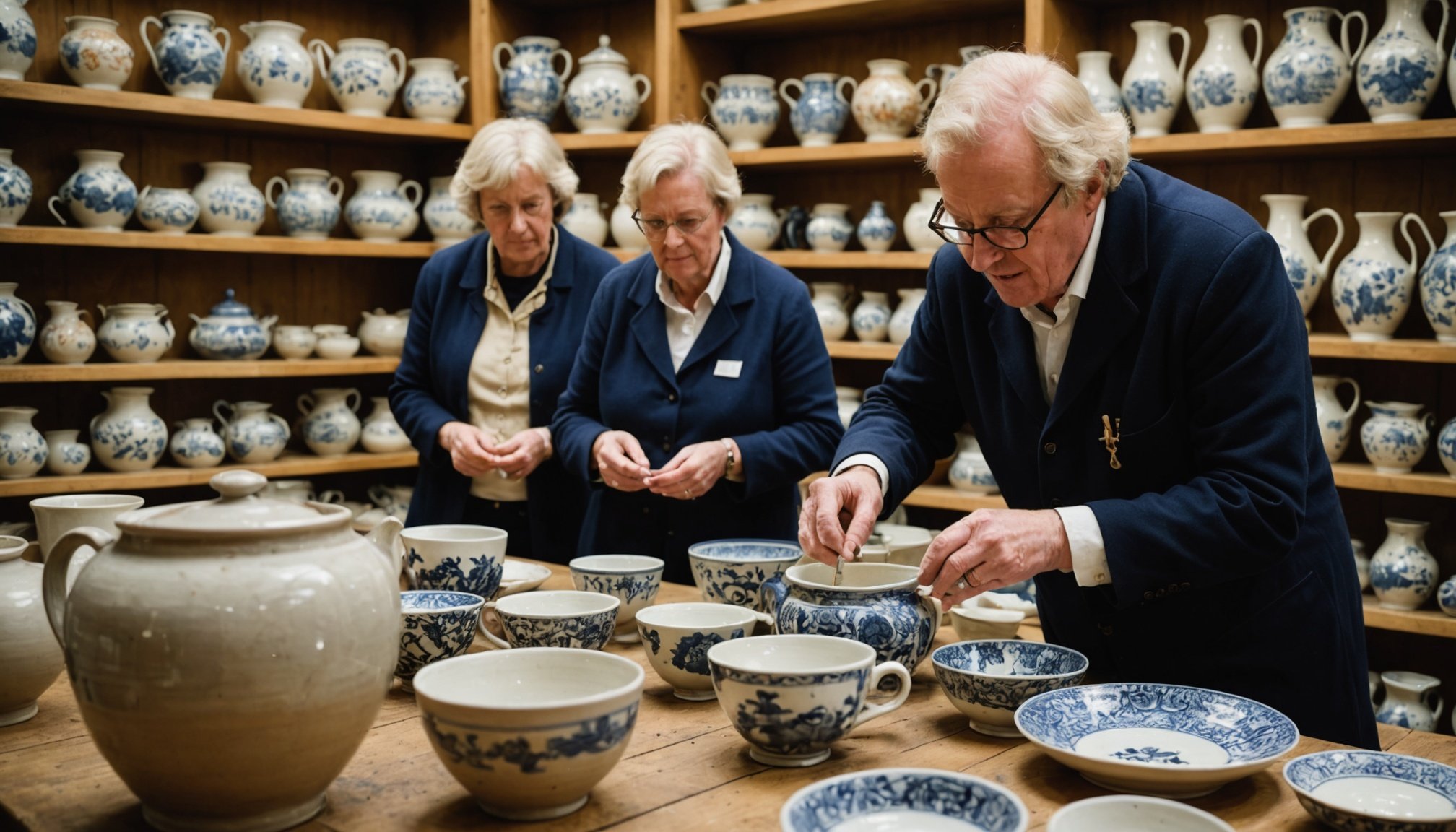Unveiling the Fascinating Legacy of British Ceramics: Engaging Guided Tours in Stoke-on-Trent for Inquisitive Explorers
Stoke-on-Trent, a city in the heart of England, is often referred to as the “Potteries” due to its rich and storied history in the ceramics industry. For centuries, this region has been the epicenter of British pottery, with names like Wedgwood, Royal Doulton, and Spode etching their mark on the world of ceramics. If you’re an inquisitive explorer looking to delve into the fascinating legacy of British ceramics, Stoke-on-Trent is the perfect destination for you.
Stoke-on-Trent: The Heart of UK Pottery
Stoke-on-Trent’s journey in pottery dates back to the 17th century, when the combination of abundant clay deposits, coal for firing, and water from the Trent and Mersey Canal created the perfect conditions for ceramic production. Today, this city is a treasure trove of historic sites, museums, and active pottery factories that offer a glimpse into the past, present, and future of British ceramics.
Also read : Discover the art of british sausage making: interactive workshops for adventurous travelers
The World of Wedgwood Museum
One of the must-visit attractions in Stoke-on-Trent is the World of Wedgwood museum. Founded by Josiah Wedgwood in 1759, Wedgwood is one of the most iconic names in British ceramics. The museum is a comprehensive repository of the history of ceramics, featuring an extensive collection of Wedgwood’s famous Jasperware, among other notable pieces. Here, you can participate in pottery painting workshops, allowing you to get hands-on with the craft and take home your own handmade piece.
“As you walk through the World of Wedgwood, you’re not just seeing artifacts; you’re experiencing the evolution of an art form,” notes a museum staff member. “From the intricate designs to the innovative techniques, every piece tells a story of craftsmanship and innovation.”
Additional reading : Discover british animation history: a tourist”s guide to immersive exhibits in london
Exploring Local Workshops and Classes
To truly immerse yourself in the world of British ceramics, attending a workshop or class is essential. Here are some notable places where you can get hands-on with pottery:
The Emma Bridgewater Factory
Located in the heart of Stoke-on-Trent, the Emma Bridgewater factory offers a unique and interactive experience. Guests can paint their own pottery, selecting from a variety of pieces and applying the final glaze. Emma Bridgewater, the contemporary pottery designer, emphasizes the accessibility of pottery: “Our workshops are designed to make pottery accessible to everyone. It’s a fun and creative way to spend time, and you get to take home your own handmade piece.”
The Leach Pottery in St Ives
While not in Stoke-on-Trent itself, the Leach Pottery in St Ives, Cornwall, is another significant destination for pottery enthusiasts. Founded by Bernard Leach, a pioneer of studio pottery, this studio offers classes and workshops that follow traditional methods. Here, you can learn hand-building, throwing on a potter’s wheel, and advanced glazing techniques, all under the guidance of skilled artisans.
A Detailed Look at Traditional Pottery Techniques
Traditional UK pottery is characterized by several distinct techniques that have been passed down through generations.
Hand-Building and Throwing
Hand-building, one of the oldest methods, involves forming pottery using coils or spirals of clay. This technique dates back to prehistoric times and is still practiced today. Throwing on a potter’s wheel, which originated around 4000 BC, is another fundamental method. As Lucie Rie, a renowned potter, once said, “The wheel is an extension of the hand; it allows for precision and fluidity in creating forms.”
Glazing and Firing
Glazing is a critical step in pottery, adding color and protection to the ceramic piece. The type of glaze and firing technique can significantly alter the final appearance. For example, the “terre sigillée” method involves applying a thin layer of red clay and water to facilitate the glazing process, resulting in either a red-orange or black finish depending on the firing atmosphere.
Notable UK Pottery Brands: A Comparative Look
Here is a comparative table highlighting some of the most notable UK pottery brands:
| Brand | Founded | Notable Products | Techniques | Heritage |
|---|---|---|---|---|
| Wedgwood | 1759 | Fine Bone China | High-temperature firing, intricate designs | Founded by Josiah Wedgwood, known for Jasperware |
| Royal Doulton | 1815 | Figurines, Tableware | Hand-painting, glazing | Known for its Lambeth studio and character jugs |
| Spode | 1767 | Blue Italian, Woodland | Transfer printing, underglaze blue | Introduced the first fine bone china |
| Emma Bridgewater | 1985 | Decorative Tableware | Hand-painting, sgraffito | Known for its colorful, whimsical designs |
| Leach Pottery | 1920 | Studio Pottery | Hand-building, throwing, high-temperature firing | Founded by Bernard Leach, a pioneer of studio pottery |
Guided Tours and Heritage Sites
Stoke-on-Trent offers a variety of guided tours and heritage sites that allow you to explore the rich history of British ceramics.
Gladstone Pottery Museum
The Gladstone Pottery Museum is one of the last remaining Victorian pottery factories in the UK. Here, you can take a guided tour and see how pottery was made in the 19th century. The museum also features live demonstrations by skilled artisans, giving you a firsthand look at traditional pottery techniques.
Trentham Gardens
Trentham Gardens, a historic estate with beautiful gardens and a lake, also houses the Trentham Monkey Forest and a shopping village. While not exclusively a pottery site, it is part of the broader cultural and industrial heritage of the area, offering a well-rounded experience of Stoke-on-Trent.
Keele University and the Local Community
Keele University, located near Stoke-on-Trent, often collaborates with local pottery factories and museums to promote the heritage of British ceramics. The university’s involvement highlights the ongoing importance of this industry in the local community and its contribution to the region’s rich history.
Practical Insights and Actionable Advice
If you’re planning to explore the world of British ceramics in Stoke-on-Trent, here are some practical insights and tips to make your experience even more enriching:
- Start with Simple Designs: When participating in pottery painting workshops, start with simple designs and gradually move to more complex patterns. This will help you build confidence and skills.
- Use High-Quality Glazes: Always use high-quality glazes and follow the manufacturer’s instructions to ensure the best results.
- Practice Makes Perfect: Don’t be discouraged by initial mistakes. Practice is key to mastering pottery techniques.
- Join Group Workshops: Organize a group pottery painting session for a fun and interactive team-building activity. This encourages collaboration and creativity within the group.
Anecdotes and Stories from the Industry
The history of British ceramics is filled with fascinating stories and anecdotes that highlight the dedication and innovation of the people involved.
For instance, Josiah Wedgwood’s pioneering work in creating fine bone china revolutionized the industry. His commitment to quality and innovation set a standard that many other pottery brands have followed. Similarly, Bernard Leach’s work in studio pottery brought a new wave of creativity and artisanal craftsmanship to the field.
Stoke-on-Trent is more than just a city; it is a living, breathing museum of British ceramics. From the historic factories to the modern workshops, every corner of this city tells a story of craftsmanship, innovation, and heritage. Whether you’re a seasoned pottery enthusiast or just starting to explore the world of ceramics, Stoke-on-Trent offers an experience that is both educational and enriching.
As Emma Bridgewater aptly puts it, “The heritage of Stoke-on-Trent is unparalleled; it’s where the art of pottery comes alive.” So, pack your bags, grab your brushes, and get ready to immerse yourself in the fascinating legacy of British ceramics in the heart of England.




